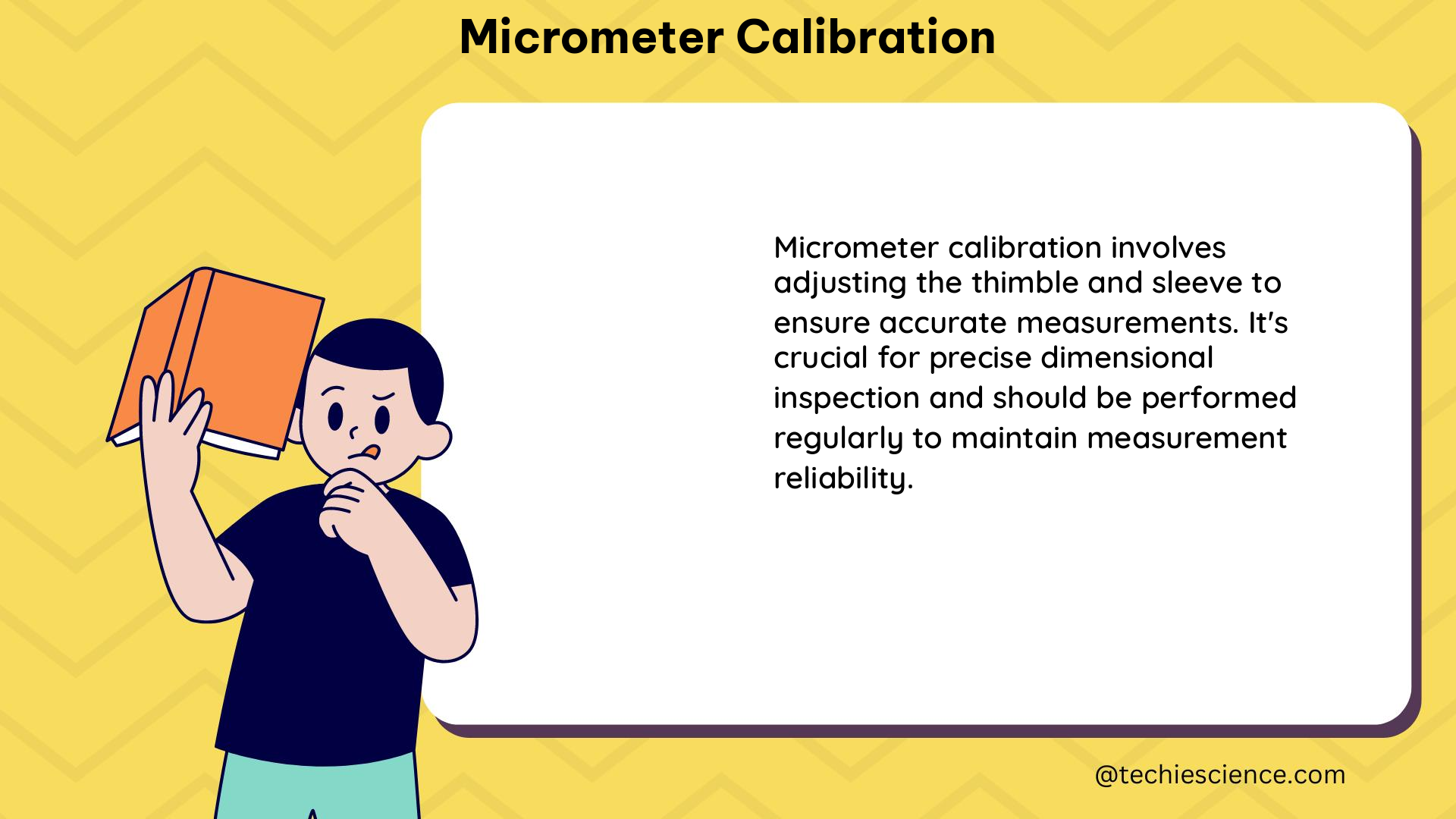Micrometer calibration is a critical process that ensures the accuracy and reliability of measurements taken using micrometers. This comprehensive guide will provide you with a deep understanding of the principles, techniques, and best practices involved in calibrating micrometers, equipping you with the knowledge and skills necessary to perform this task with precision and confidence.
Understanding Micrometer Accuracy
The accuracy of a micrometer is primarily determined by two key factors: its resolution and maximum permissible error (MPE). The resolution of a micrometer refers to the smallest change in measurement that the instrument can detect, while the MPE represents the maximum deviation of the micrometer’s measurements from the true value.
Theorem: The accuracy of a micrometer is determined by its resolution and maximum permissible error (MPE), which are specified as a function of the micrometer’s range.
Physics Formula: The MPE of a micrometer is typically specified as a percentage of its range, according to the formula:
MPE = (tolerance / range) * 100%
Physics Example: A 0-1 inch micrometer has a tolerance of ±0.0001 inches and a range of 1 inch. Therefore, its MPE is:
MPE = (0.0001 / 1) * 100% = 0.01%
Physics Numerical Problem: A 1-2 inch micrometer has a tolerance of ±0.0002 inches and a range of 1 inch. What is its MPE?
MPE = (0.0002 / 1) * 100% = 0.02%
Calibrating Micrometers Using Gage Blocks

To calibrate a micrometer, it is typically compared against a standard with higher accuracy, such as a gage block. Gage blocks are precision-machined reference standards that are used to calibrate a wide variety of measurement instruments. These blocks are calibrated to a specific tolerance, which is typically much smaller than the MPE of the micrometer being calibrated.
Figures, Data Points, Values, Measurements:
- Resolution of a 0.001 inch micrometer: 0.001 inches
- MPE of a 0-1 inch micrometer: ±0.0001 inches
- MPE of a 1-2 inch micrometer: ±0.0002 inches
- Tolerance of a gage block: ±0.00005 inches
The process of calibrating a micrometer using gage blocks typically involves the following steps:
- Inspect the Micrometer: Carefully examine the micrometer for any signs of damage, such as cracks, dents, or wear. Ensure that the frame is straight and the spindle and anvil are flat and free of pinholes.
- Set up the Gage Blocks: Arrange the gage blocks in a stack so that their combined thickness matches the measurement to be taken with the micrometer. Ensure that the gage blocks are clean and free of debris.
- Place the Gage Blocks on the Anvil: Carefully place the gage block stack on the anvil of the micrometer, making sure it is aligned with the spindle.
- Zero the Micrometer: Rotate the thimble until the spindle touches the gage block stack, then zero the micrometer by rotating the lock nut.
- Take the Measurement: Slowly rotate the thimble to move the spindle away from the gage block stack and note the measurement displayed on the thimble.
- Compare the Measurement: Compare the measurement taken with the micrometer to the known value of the gage block stack. If the measurement is within the MPE of the micrometer, it is considered calibrated. If the measurement is outside the MPE, the micrometer may need adjustment or repair.
Maintaining Micrometer Accuracy
To ensure the ongoing accuracy of micrometers, it is recommended to calibrate them at regular intervals, typically every six months to one year. The calibration interval may be shorter for micrometers used in critical applications or those subjected to heavy use or rough handling.
Additionally, it is essential to use high-quality gage blocks and handle them with care to avoid contamination or damage. Gage blocks should be stored in a clean, dry environment and handled with clean, dry hands or gloves.
Conclusion
Micrometer calibration is a crucial process that ensures the accuracy and reliability of measurements taken using these precision instruments. By understanding the principles of micrometer accuracy, mastering the calibration procedure using gage blocks, and maintaining the instruments’ integrity, you can confidently perform this task and ensure that your measurements are consistently accurate and reliable.
References:
– Micrometer Calibration: Resolution, Accuracy, and Range
– Micrometer Calibration: A Comprehensive Guide
– Quality 101: Calibrating Micrometers

The lambdageeks.com Core SME Team is a group of experienced subject matter experts from diverse scientific and technical fields including Physics, Chemistry, Technology,Electronics & Electrical Engineering, Automotive, Mechanical Engineering. Our team collaborates to create high-quality, well-researched articles on a wide range of science and technology topics for the lambdageeks.com website.
All Our Senior SME are having more than 7 Years of experience in the respective fields . They are either Working Industry Professionals or assocaited With different Universities. Refer Our Authors Page to get to know About our Core SMEs.